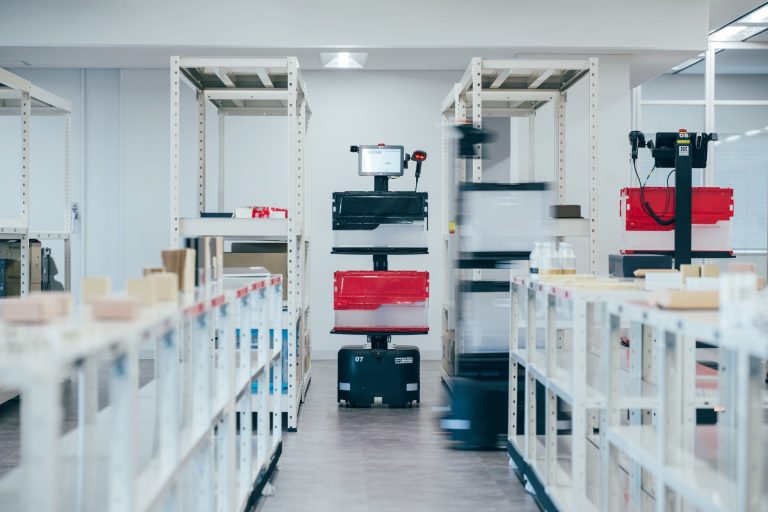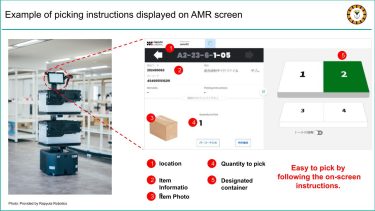This is the second part of an article featuring Picking Assist AMR, a type of logistics robot.
In the first part of the article, we discussed the definition of picking-assist AMR, market trends, major solutions, and how it differs from other logistics robots.
At TORALOGI, we have covered various logistics robots, whic…
In this second part, we will examine in detail the benefits that arise from using a picking assist AMR in tasks that were previously done manually. We will also discuss how to balance the investment cost with these benefits. Please refer to the first part for an introduction to picking assist AMRs.
If you are interested in learning about and comparing various logistics robots, including picking assist AMRs, please see this article: “The latest logistics robots in warehouses – Part 2: Shipping.”
- 1 Summary of the benefits of using Picking Assist AMR (compared to analog operations)
- 2 Benefit ①: Increased productivity
- 3 Benefit ②: Increased accuracy in business management
- 4 Benefit③ Reduced workload for pickers
- 5 The benefits of Picking Assist AMR are great! So how is the balance between investment and return?
Summary of the benefits of using Picking Assist AMR (compared to analog operations)
In the first part of this special feature, we discussed the advantages of Picking Assist AMRs compared to other types of robots. In this part, we will consider the benefits of using AMRs for picking tasks compared to traditional, human-performed picking tasks that have not been automated.
Three benefits of utilizing Picking Assist AMR (increased productivity, increased management accuracy, reduced human workload)
There are three major benefits of using Picking Assist AMR:
①Increased productivity
②Increased accuracy in business management
③Reduced burden on workers
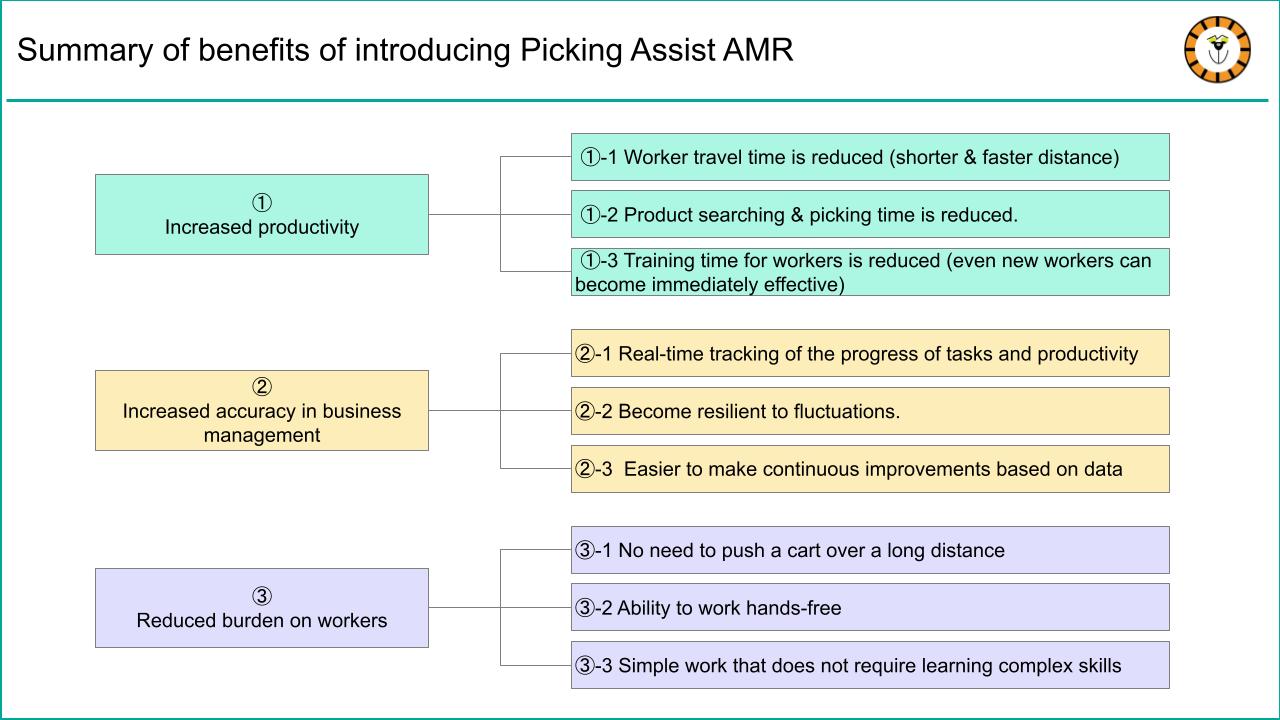
We will examine each of (1), (2), and (3) in detail.
Benefit ①: Increased productivity
The most important benefit of Picking Assist AMR is the increase in productivity, and the minimum requirement for its introduction is that the investment pays for itself. According to Rapyuta Robotics, the productivity of picking operations has been improved by 1.5 to 2.5 times with Picking Assist AMR in actual cases, although it varies depending on conditions such as the scale of installation and the nature of the cargo.
There are three key factors that contribute to increased productivity. Each of these factors will be explained in detail in the following sections.
①-1 Reduced walking time for workers
①-2 Product searching & picking time is reduced.
①-3 Training time is reduced (even new workers become immediately productive)
①-1 Reduced walking time for workers
The biggest impact on productivity is the reduction of walking time for picking workers. In a typical picking operation, a worker walks around the picking area pushing a cart, picks when arrives at a location, moves to the next location, and when the cart is full, walks back to the packing area, empties the cart, and proceeds to the next picking location…. The time spent moving from one location to the next takes up a large portion of the picking time. It is said that as much as 60% of the picking time is spent moving.
By utilizing a picking assist AMR, this travel time can be reduced by having the AMR replace a large portion of the picking operator’s travel. Generally, about three AMRs are installed for each picking operator.
The flow of the process is that the AMR first moves to the location to be picked and waits. Once a worker goes there to pick, the AMR moves to the next location. The worker then moves to another AMR that is also waiting, picks again, and so on. The picker only moves between AMRs that are waiting at nearby locations; all other movement is done by the AMRs. The AMRs also move the pickers to the next step in the picking process, such as the packing area. Picking operators can concentrate on the picking process with much less travel time, which greatly increases productivity.
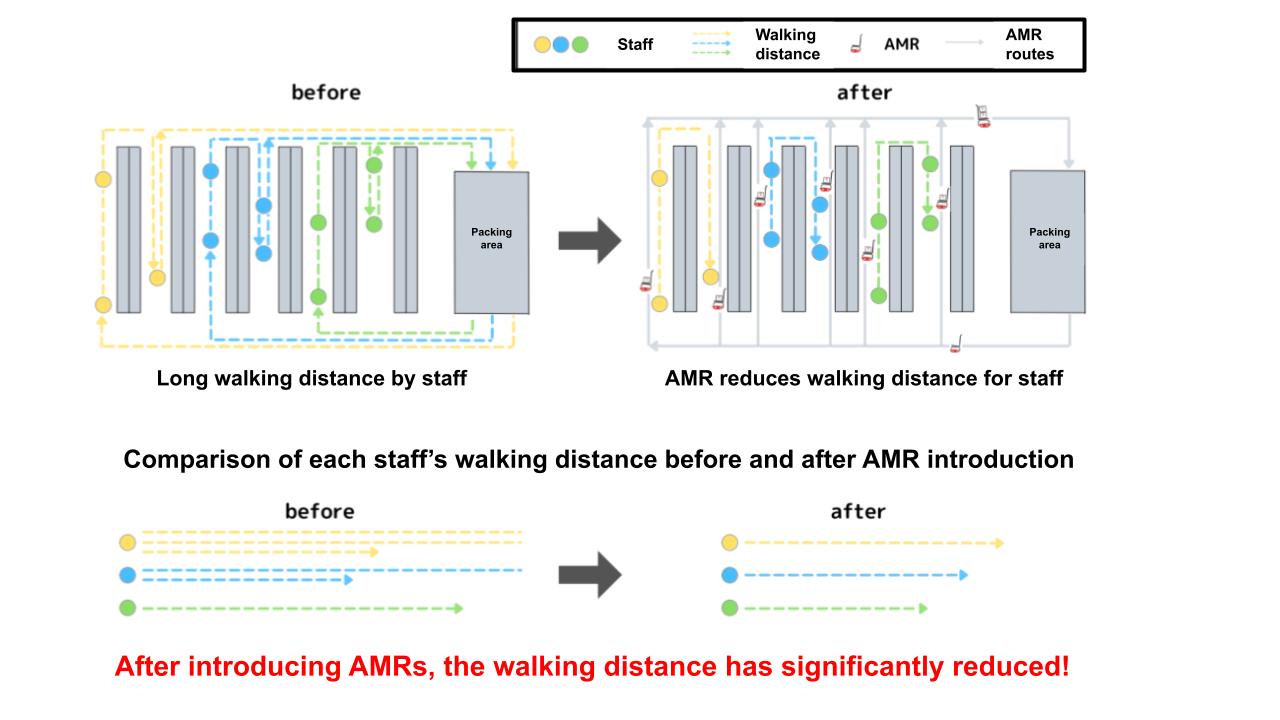
①-2 Product searching & picking time is reduced.
Picking Assist AMR not only reduces travel time to the picking location, it also reduces the time it takes to find and pick items once they arrive at the location.
In a typical picking operation, the picker moves to the vicinity of the picking location and then refers to a paper picking list or a handy terminal to confirm which shelf and location (the exact location) the item is on before picking it. An unfamiliar worker may have to recheck the picking list or handy terminal and location number many times. If the items are not the type that can also display pictures on the handy terminal, the only way to check the items is to compare the item names. If there are several similar items, or if the items are not frequently shipped and handled infrequently, it may take more time to check them carefully. Thus, it takes a surprisingly long time to locate and confirm items.
The Picking Assist AMR can save a great deal of time. For example, Rapyuta Robotics’ PA-AMR is designed to stop right in front of the exact location of the item to be picked, and display a picture of the item on a built-in screen (usually a tablet larger than a handheld terminal). The screen also shows the number of items to be picked. Picking is completed simply by picking the number of items displayed on the screen and placing them in the designated container. This process can be carried out quickly and without hesitation by anyone. Additionally, the system displays on-screen instructions or suggestions for the most efficient location to go next.
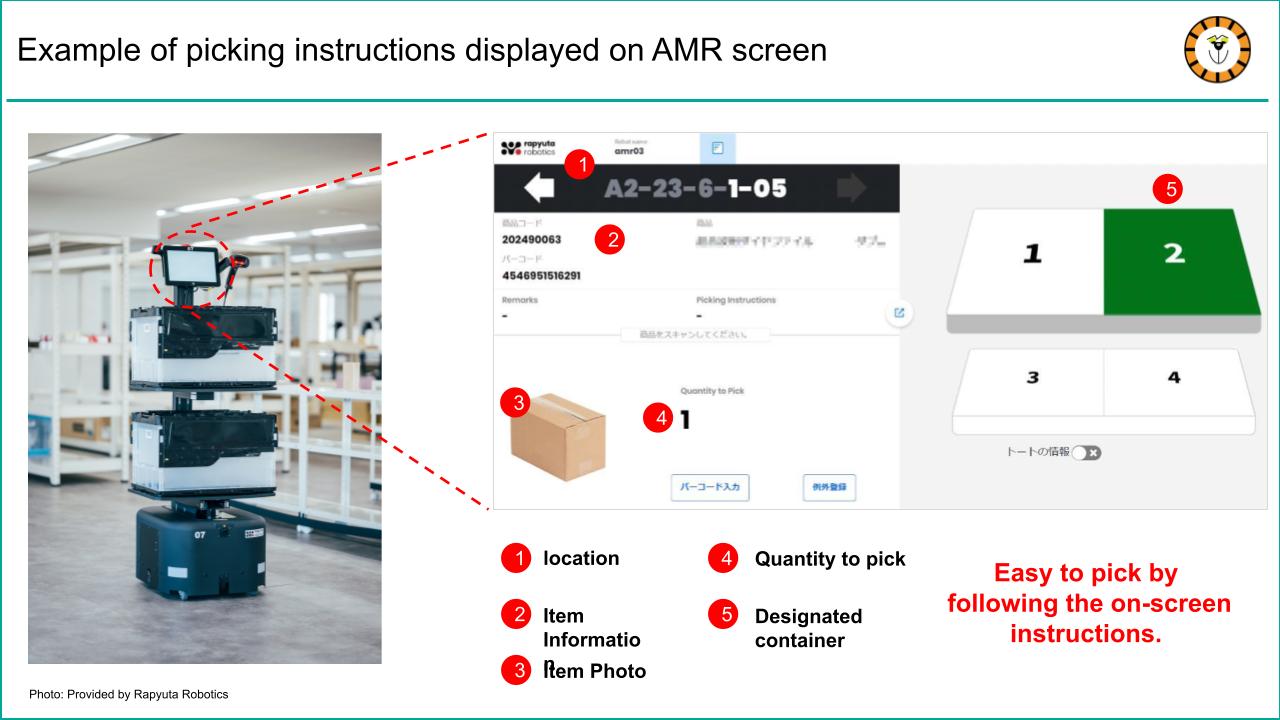
①-3 Training time is reduced (even new workers become immediately productive)
The Picking Assist AMR simplifies the picking process by guiding workers directly to the item location and displaying the necessary information on the screen. This eliminates the need for workers to memorize location layouts, item appearances, and handling precautions, making training faster and easier. It also enables new or temporary staff to be productive immediately, which increases overall productivity and allows for better responsiveness to workload fluctuations.
Benefit ②: Increased accuracy in business management
The second benefit of implementing Picking Assist AMR is the increased accuracy in managing operations. Management here refers to all aspects of operations, including design, planning, progress and productivity management during execution, and improvement. As AMR is introduced and operated, data related to operations is generated and accumulated. By utilizing this data, it is expected to improve the accuracy of management, particularly in the following three areas.
②-1 Real-time tracking of the progress of tasks and productivity
②-2 Become resilient to fluctuations.
②-3 Easier to make continuous improvements based on data
②-1 Real-time tracking of the progress of tasks and productivity
Picking Assist AMR accumulates data on the progress of picking operations and the productivity of each person in charge up to that point, and shares this data in real time. Managers can check this data in real time from an easy-to-understand dashboard, enabling them to immediately make a decision when it is necessary to take some countermeasures, such as changing staff assignments.
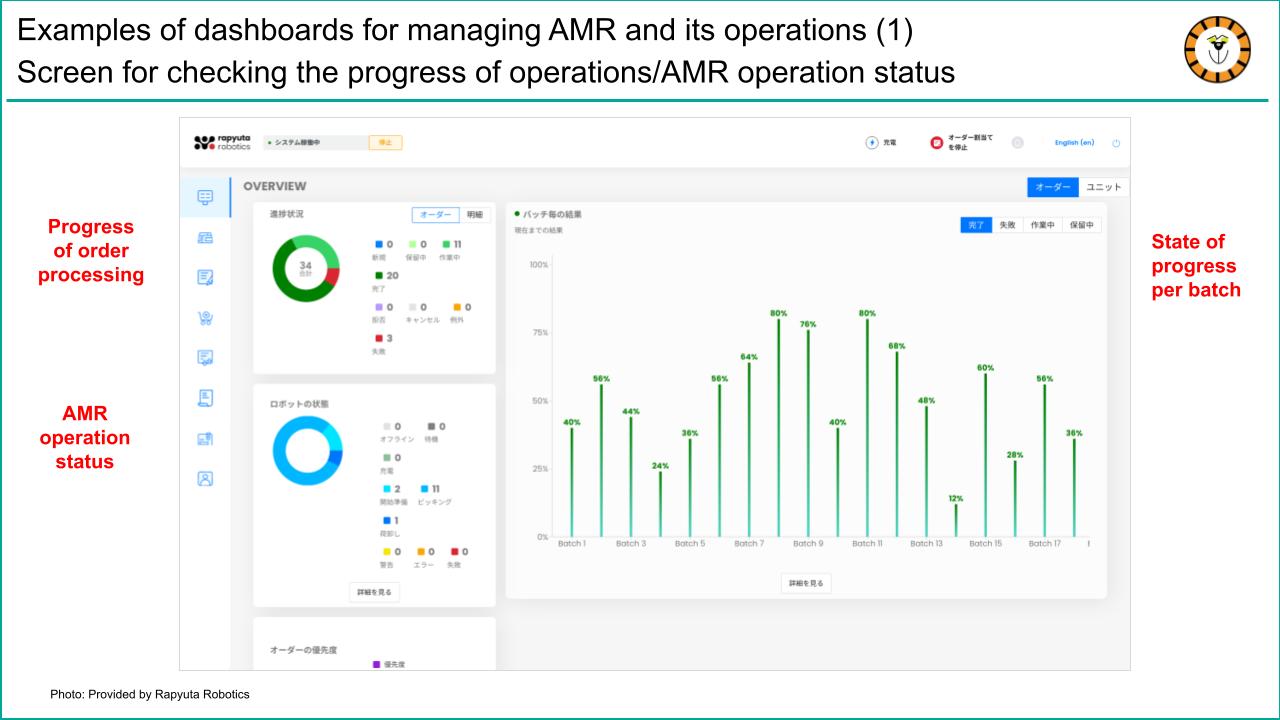
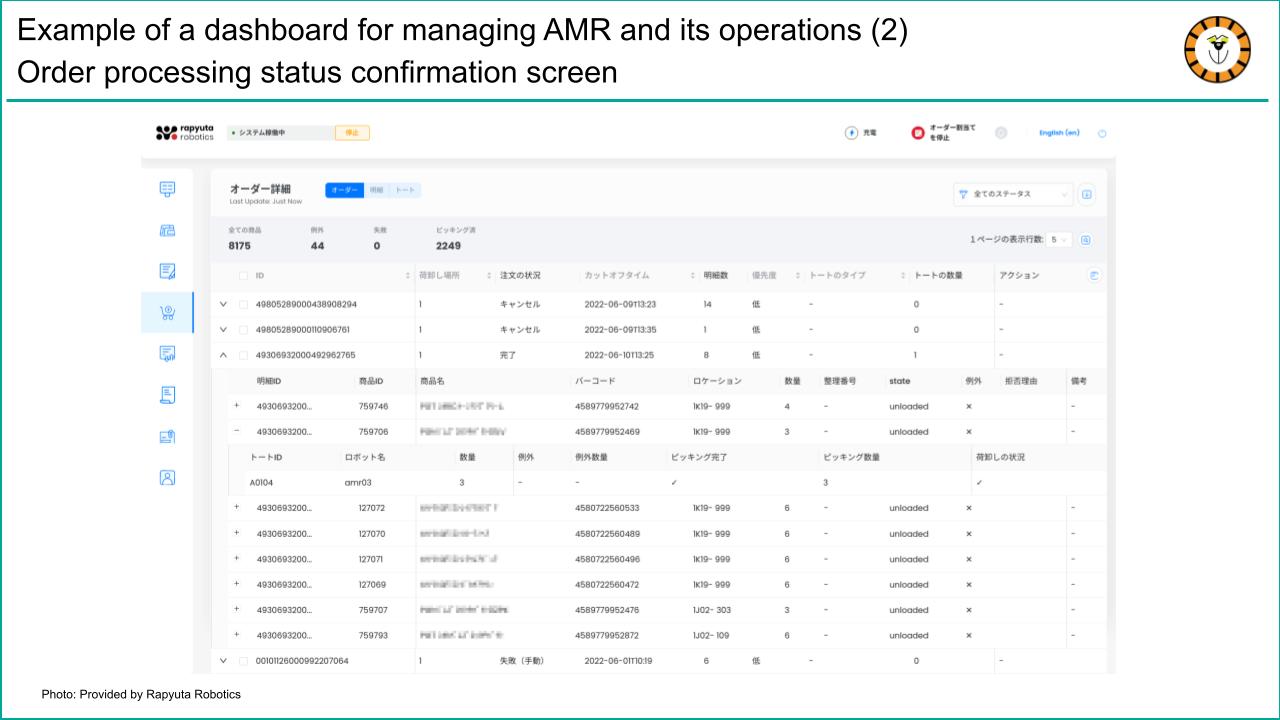
②-2 Become resilient to fluctuations.
In actual examples of introducing Picking Assist AMR, the number of AMRs to be introduced is often determined based on the standard workload rather than the peak of workload fluctuations. This is because a higher operating rate of AMRs is more likely to result in a better return on investment. The target of the introduction is to achieve high productivity with a small number of workers by utilizing AMRs to complete the standard workload. If the workload exceeds the standard level (due to positive fluctuations), additional workers are deployed to absorb the workload. Since the productivity can be increased by utilizing Picking Assist AMR from the outset, it should be possible to complete the work with fewer workers than before, even during peak fluctuations. Therefore, it can be said that Picking Assist AMR strengthens the ability to respond to workload fluctuations.
Another way to become more resilient to fluctuations is to increase the number of Picking Assist AMRs on a short-term basis to match the demand. Adding a few AMRs can boost productivity while requiring fewer additional workers. For example, Rapyuta Robotics offers a rental service for additional AMRs for a minimum of three months. In addition, some logistics facility owners have plans to provide a shared pool of logistics robots that tenants can rent as needed. While sharing robots among tenants may be challenging due to their different needs and settings requirements, it could provide significant benefits if implemented successfully.
②-3 Easier to make continuous improvements based on data.
When picking operations are performed using Picking Assist AMR, various data related to the operations are accumulated. Who picked what and when, what was picked next, and how much time passed in between. The productivity and characteristics of workers (e.g., which items they are proficient in and how fast they work) appear in the data, so the division and assignment of responsibilities can be reviewed and optimized based on the data.
Data on where AMRs are and which routes they have traveled is also accumulated, and the dashboard that manages AMRs usually traces the placement and movement of all AMRs in real time, so the situation at that moment can be seen at a glance in real time. If the AMRs are getting stuck in traffic jams and moving on inefficient routes more often than not, this will show up in the data, so the layout can be changed or the picking order can be adjusted to make it more productive.
Although regular handheld terminals also record workers’ activity, AMRs have the advantage of being able to analyze location, movement paths, and elapsed time, making it easier to identify more effective solutions for improvement.
Benefit③ Reduced workload for pickers
Picking Assist AMR makes picking tasks much easier, reducing workload for pickers compared to traditional methods. The following are three aspects where AMR is expected to reduce burden on workers.
③-1 No need to push a cart over a long distance
③-2 Ability to work hands-free
③-3 Simple work that does not require learning complex skills
In typical picking operations, pickers push hand carts or two-tier carts with containers or boxes for picking. While pushing a cart for a short distance may not be a significant burden, continuously pushing it while bending over can be a considerable physical strain if done for several hours. By utilizing AMR, the burden on workers is reduced to zero since AMR replaces the cart and carries the items for picking.
③-2 Ability to work hands-free
Picking Assist AMR displays instructions on its screen, eliminating the need for pickers to carry paper picking lists, handheld terminals, and various accessories like paper binders and writing utensils. Those in the logistics industry may have experienced the burdensome process of holding multiple sheets of paper picking lists, checking off completed tasks with a pen, checking remaining tasks, turning the paper over, and so on while pushing a cart. With AMR, pickers are freed from the tedious and cumbersome work of having their hands occupied with various items. Additionally, handheld terminals can be surprisingly heavy, and pickers no longer need to take them off their waists, press a small button, and then put them back on their waists again.
If you’re already used to the paper picking lists or handheld terminals, then it may not seem like a burden to you. However, once you start using Picking Assist AMR and walk around with just your hands free, it may become too much of a hassle to go back to the old way. Interestingly, when we asked users who use Rapyuta Robotics’ AMR about the burden of picking work, they said that it was much easier since they didn’t have to push carts and carry heavy terminals. But, because they were picking continuously, it was a different kind of challenge. Finding the right balance between workload and productivity is essential. It seems that the faster progress of picking work and increased productivity is evidence of that balance being achieved.
③-3 Simple work that does not require learning complex skills
This Benefit is closely related to the first one – increased productivity – because reducing training time for workers means they can start working more quickly and efficiently. With Picking Assist AMR, even new workers can easily start working in the field after learning the simple operation of the system. The large photos displayed on the screen clearly indicate the picking quantity and designated container, making it less likely for mistakes to occur. Additionally, the simple and easy-to-understand work process allows even those with low language proficiency, such as foreigners, to perform the work as long as they can recognize the pictures and quantities.
The benefits of Picking Assist AMR are great! So how is the balance between investment and return?
So far, we have comprehensively introduced the benefits of utilizing Picking Assist AMR. As mentioned earlier, AMR can be an attractive solution for promoting DX by achieving labor savings while utilizing existing facilities such as racks.
What about the balance between the investment cost and the benefits of implementing AMRs? While there are many examples of successful AMR implementations provided by companies offering this technology, specific investment costs are not always disclosed. Among the companies that have been mentioned as early adopters of AMRs are large enterprises such as Nippon Express (*1), Sagawa Global Logistics, Keiyo Distribution Warehouse (*1), ASKUL (*1), Japan Logistic Systems (*1), Sekisui Express (*2), and other smaller to medium-sized companies that seem to be highly proactive in automation and DX. (*1 uses Rapyuta Robotics, and *2 has announced its implementation with Syrius). It is not difficult to imagine that a higher number of AMR installations would result in a better balance of investment costs and benefits. The costs associated with system integration, testing, worker training, and other expenses related to AMR implementation projects do not necessarily increase in proportion to the number of installations. Instead, when considering the cost per unit, the larger the number of installations, the smaller the cost per unit is likely to be. This, in turn, can lead to a better return on investment. Furthermore, larger-scale installations may qualify for volume discounts, which can also contribute to a more favorable cost-benefit balance.
However, it is no longer a solution that only large companies can afford. Efforts are being made to gradually reduce the investment required for implementation. When we asked Rapyuta Robotics about the minimum scale at which their AMR can be used cost-effectively, they indicated that it would require a picking area of at least 500 square meters and more than five picking workers. This doesn’t seem to require such a large-scale operation.
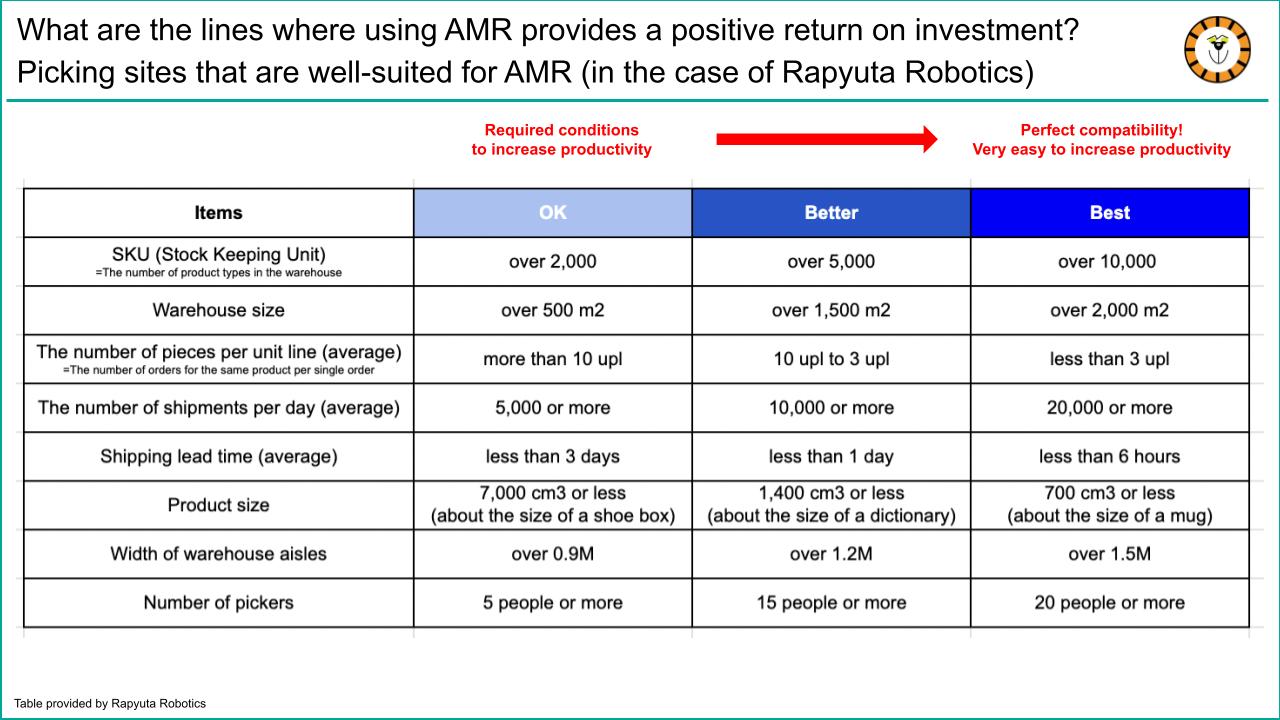
Let’s take a closer look at how the investment required for implementation is being reduced. First, in terms of system integration, which has a significant weight, the collaboration with WMS (Warehouse Management System) (AMRs receive shipping instructions data from WMS and work with humans to execute picking tasks), is being addressed by preparing API collaboration in advance with major WMS packages, rather than developing collaboration with WMS for each individual project. For example, Rapyuta Robotics has announced the achievement of automatic collaboration through API with Logi-Zero (Logizard), and Syrius with Cloud Thomas (Kantsu). It is expected that such collaborations will continue to expand in the future, and there is an expectation that the system integration cost of AMRs will be reduced if using major WMS packages.
As more companies adopt Picking Assist AMRs, the vendors providing the solution are gaining expertise, resulting in more efficient implementation projects and reduced costs. Rapyuta Robotics is believed to be the market leader in AMR in Japan, with the most implementation cases. In their early days, there was no clear answer as to which industries or tasks AMRs would fit into or where they would perform best. However, as they have accumulated knowledge and experience from various implementation cases, Rapyuta Robotics has been able to provide more precise answers regarding which industries and tasks are suitable for AMRs and how to utilize them to achieve higher productivity.
It appears that the entire process of implementing Picking Assist AMRs and the investments required for it are gradually becoming more streamlined. There is an increasing number of inquiries from non-major companies to vendors offering Picking Assist AMRs, and the number of contract cases also appears to be increasing (although there is little public information available). After verifying the benefits of Picking Assist AMRs mentioned earlier, it is becoming mature enough to consider the adoption of Picking Assist AMRs as a viable option for not only major companies, but also other companies, if significant achievements can be expected.
Through the two-part series on Picking Assist AMRs, we have examined the overview, benefits, and investment trends of the solution. It is hoped that readers now understand the significant advantages that can be expected compared to traditional manual picking, and that the solution has reached a mature and realistic option. In the future, we plan to cover more detailed features and performance-related articles, as well as conduct interviews with companies that use AMRs. Please stay tuned!
You can find the first part of the series here:
At TORALOGI, we have covered various logistics robots, whic…





























